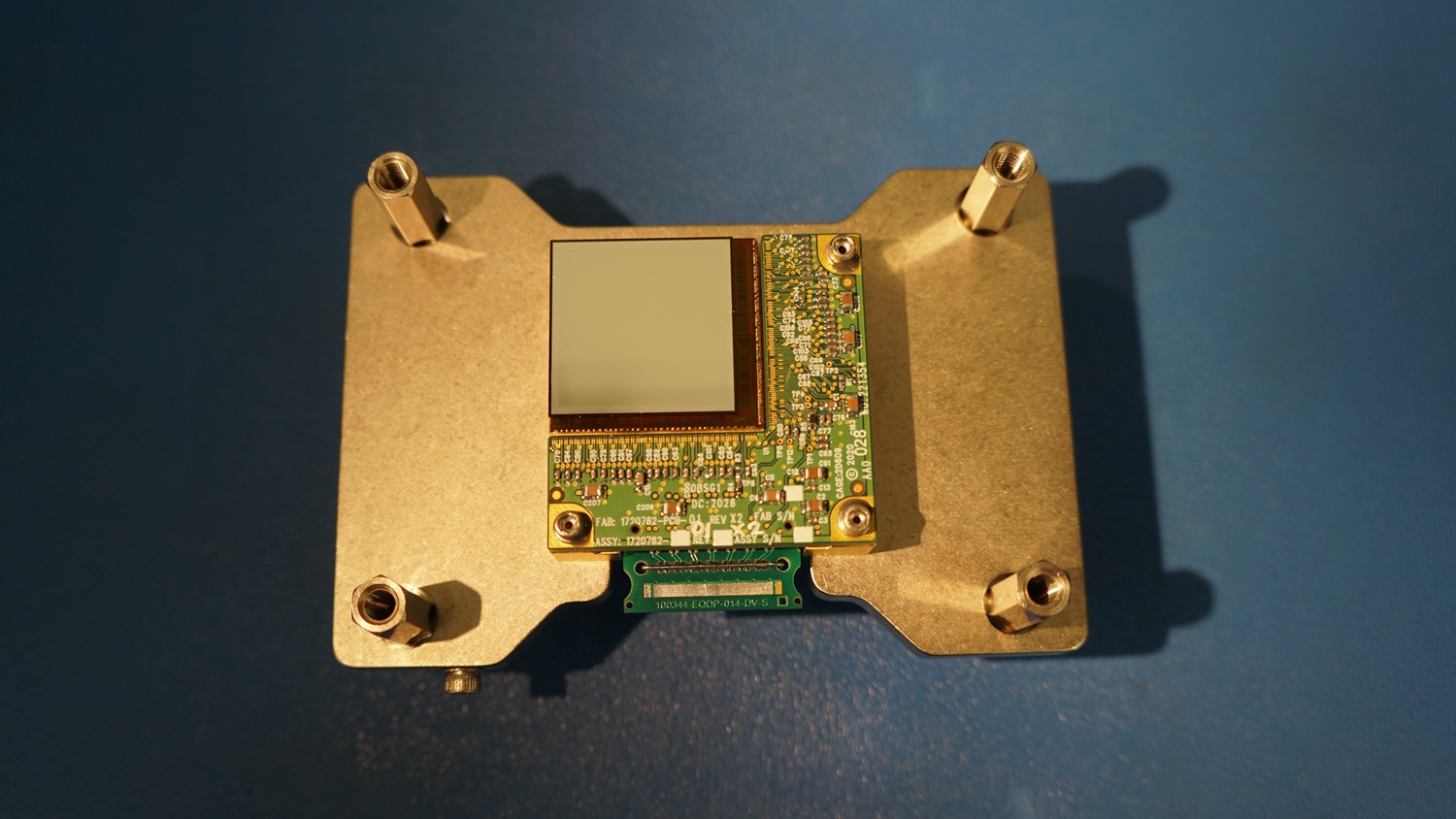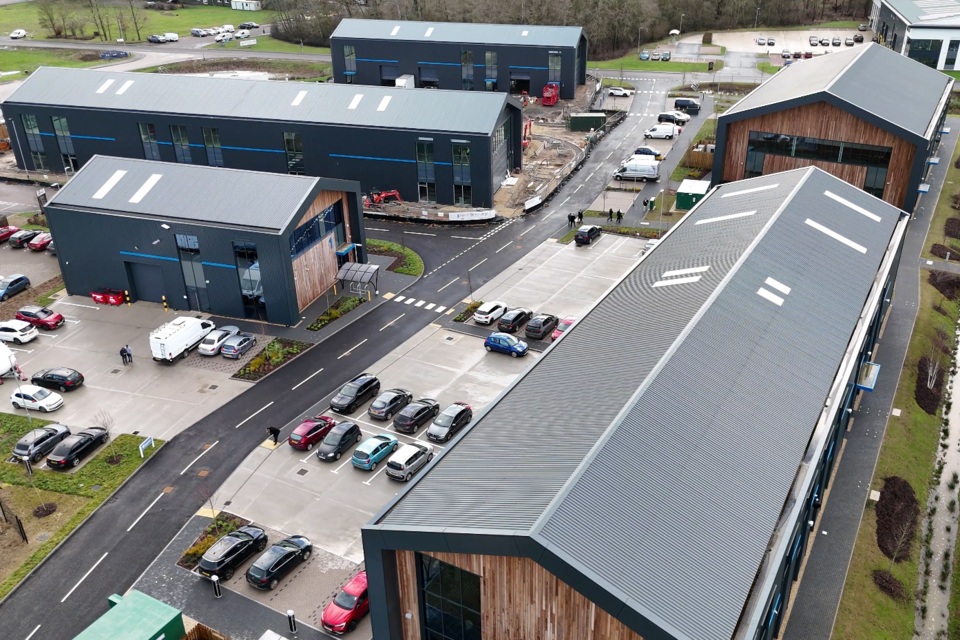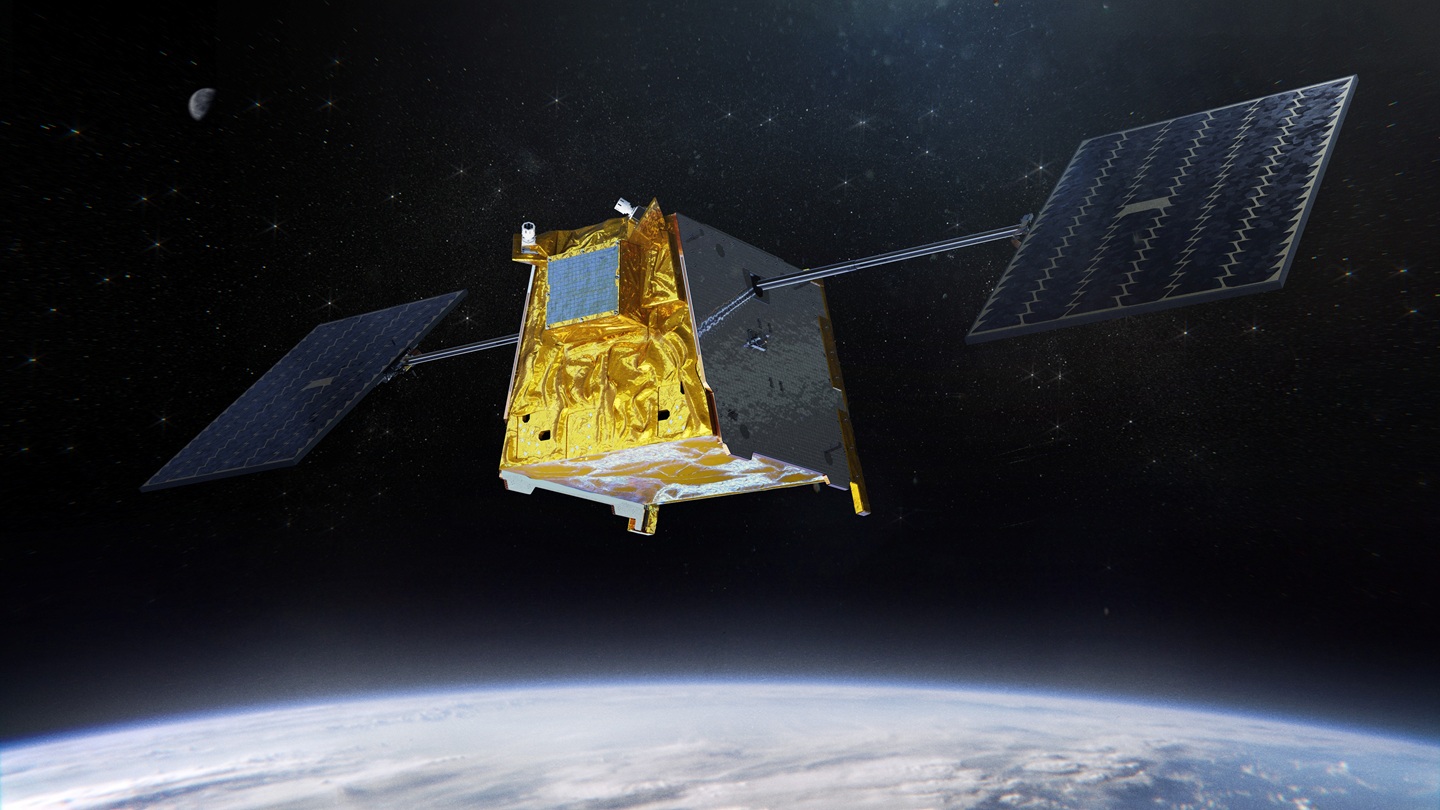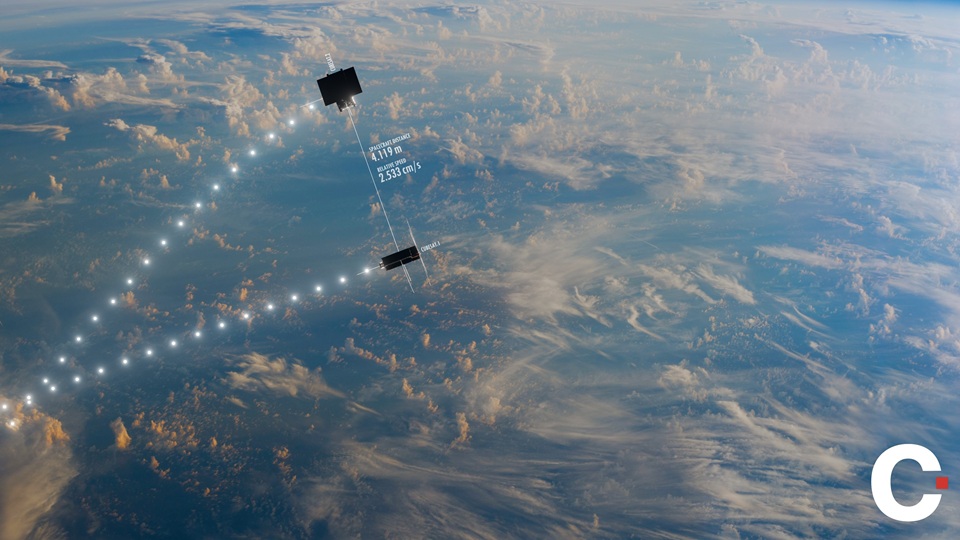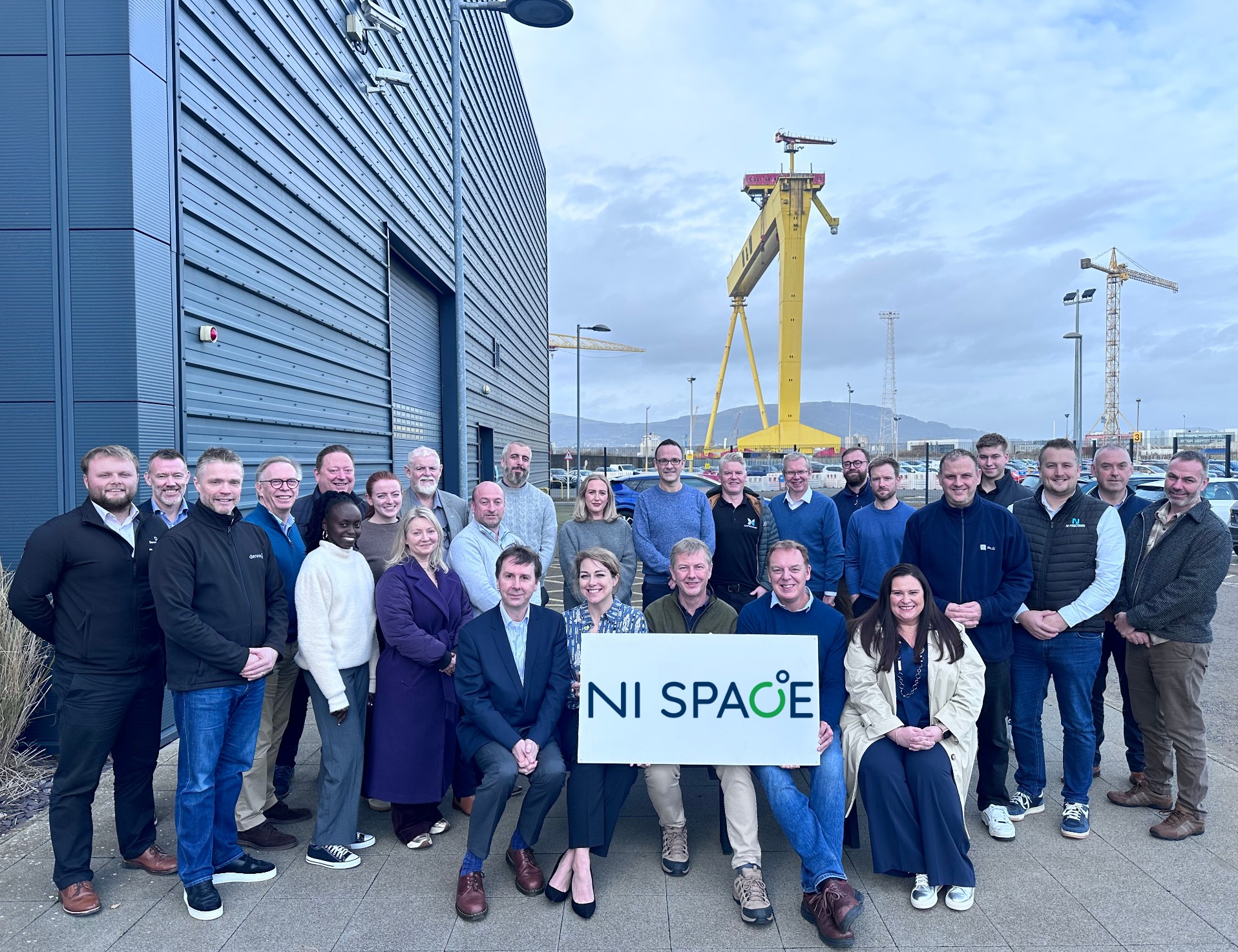SSTL signs ESA Lunar Pathfinder comms contract
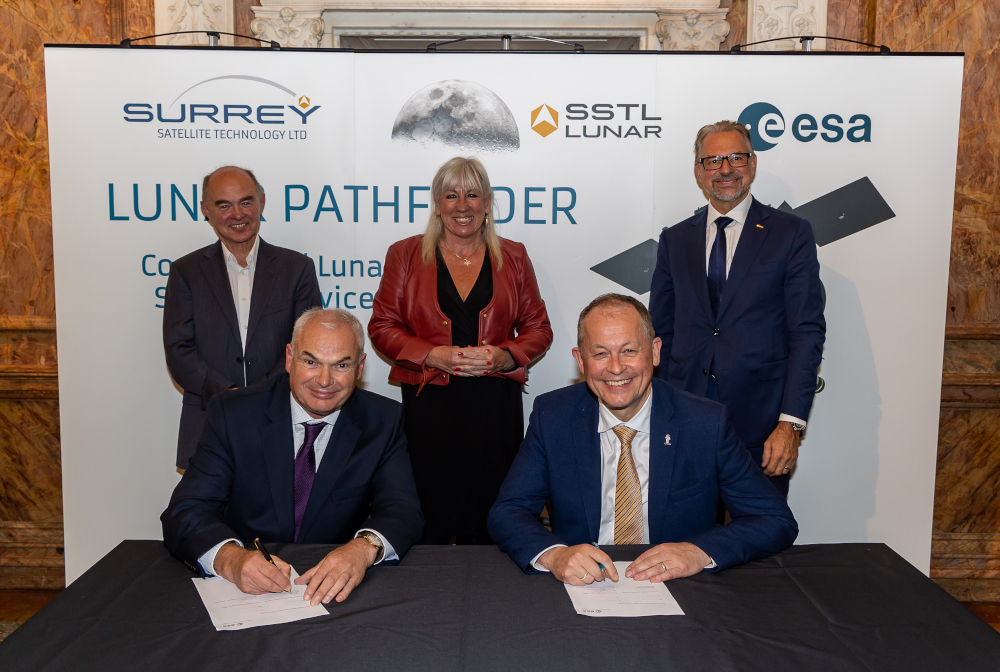
Image courtesy SSTL
The Commercial Lunar Mission Support Services contract was signed between ESA’s Director of Human and Robotic Exploration, Dave Parker, and SSTL’s Managing Director, Phil Brownnett, on 15 September 2021 at The Royal Society in London. Amanda Solloway, UK Government Science Minister, Josef Aschbacher, ESA’s Director General, Paul Bate, Director of the UK Space Agency, and SSTL’s Executive Chairman, Sir Martin Sweeting were also in attendance.
ESA will be the anchor customer for services from Lunar Pathfinder which will be the first dedicated lunar communications relay spacecraft when it launches in 2024. The agreement establishes ESA’s first commercial lunar services contract to deliver new opportunities for lower cost lunar science, technology demonstration and exploration missions. In addition, ESA is working with NASA on an agreement by which NASA would launch and deliver the Lunar Pathfinder spacecraft into its operational lunar orbit in exchange for data-relay services for their own missions, making NASA one of the first users of Lunar Pathfinder services.
SSTL’s Phil Brownnett said “We are delighted to sign up ESA as our anchor customer for communication services from our Lunar Pathfinder mission. We have been collaborating with ESA since 2018 to scope our Lunar Pathfinder mission for the commercial market, and we look forward to realising our ambition to provide cost effective services and navigation data for lunar assets.”
ESA’s David Parker said “Exploration is about discovery and returning knowledge to Earth, so in the new era of lunar exploration we require a robust and fast communications service, SSTL’s Lunar Pathfinder service will be available to all, enabling lower cost lunar science, technology demonstration and commercial exploration. As a leader in lunar exploration, ESA plans to use its services extensively.”
Science Minister Amanda Solloway said: “Surrey Satellite Technology has taken Britain’s expertise in navigation and telecommunications to the next level. Having already delivered state-of-the-art communications services to the International Space Station, UK technology will now help sustainable return to the Moon for the first time in nearly 50 years. By investing in our space sector, including £11.6m today for the Lunar Pathfinder satellite, we are helping UK companies to support major international missions, firmly securing our place as a world-leading space nation.”
For prospecting, exploring, and ultimately utilising the far side of the Moon, Lunar Pathfinder’s communications relay service will be a mission enabler, providing the vital bridge between Earth and the lunar surface. Exploring the far side of the Moon, particularly the South Pole Aitkin Basin, is a key area for future robotic and human exploration due to its chemical and mineral composition. The stable elliptical orbit of Lunar Pathfinder will allow for long duration visibility of the Southern Lunar Hemisphere each day, with maximum opportunities for the transmission and reception of data between Earth and the lunar surface.
As well as offering communication services to orbiters and lunar surface assets, Lunar Pathfinder will as host a number of navigation and scientific experiments:
An ESA GNSS receiver capable of detecting weak signals coming from the Earth GNSS infrastructure (GPS and Galileo), demonstrating its potential role into Lunar navigation
A NASA retro-reflector to demonstrate laser ranging capabilities
An ESA radiation monitor to study orbital radiation conditions
Lunar Pathfinder is supported by UK Space Agency funding via the European Space Agency (ESA) and UK company Qinetiq is working on the development of user terminals, specifically designed for compatibility to the service, for future users to plug and play.
Lunar Pathfinder is due to operate in an Elliptical Lunar Frozen Orbit (ELFO) for an operational lifetime of 8 years. The spacecraft can operate two simultaneous channels of communication with lunar assets, one in S-band and one in UHF: communications are relayed back to Earth ground stations in X-band.
For surface assets on the far side of the Moon, the use of data-relay infrastructure is a requirement for their missions. Without of line of sight of the Earth, they need a data-relay service such as the one offered by Lunar Pathfinder to communicate back with Earth. For polar surface assets, potentially with limited direct to Earth visibility, the use of the data-relay service provides the assurance of a communication link, whatever obstacle the terrain may put between the asset and the Earth. Rovers, constrained to remain within line of sight of the lander to relay their communication, will find a new independence, both in how far they can go from the lander and how long they can survive beyond the lander’s limited lifetime.
For all lunar missions, including orbiters and near side surface assets, which could manage with direct to Earth communication (DTE), there is an additional economical and technical benefit to using the proximity data-relay service. Due to the proximity of the Lunar Pathfinder spacecraft, user assets could achieve higher data-rates with a lower performance, lower mass and lower cost communication module on-board, compared with the equipment needed for DTE communication.
In 2018 SSTL and ESA signed a collaboration agreement for Commercial Lunar Mission Support Services and in May 2021 SSTL announced selection by the European Space Agency (ESA) to lead a Phase A/B1 Study under ESA’s Moonlight initiative which builds upon the success of Lunar Pathfinder. Fully integrated in the future lunar ecosystem, the objective of the future ESA Moonlight infrastructure is to provide sustainable commercial Lunar data-relay services for communication and navigation around the Moon, to every lunar missions, in a sustainable way.






